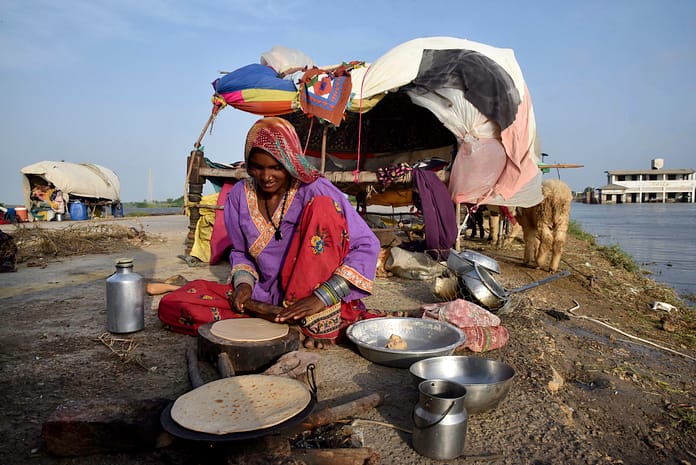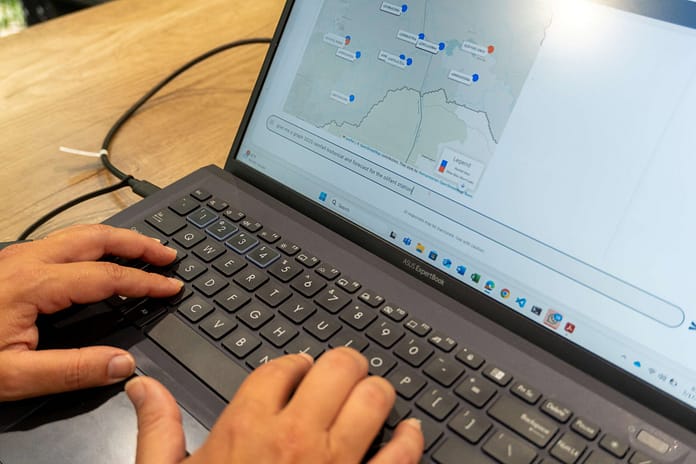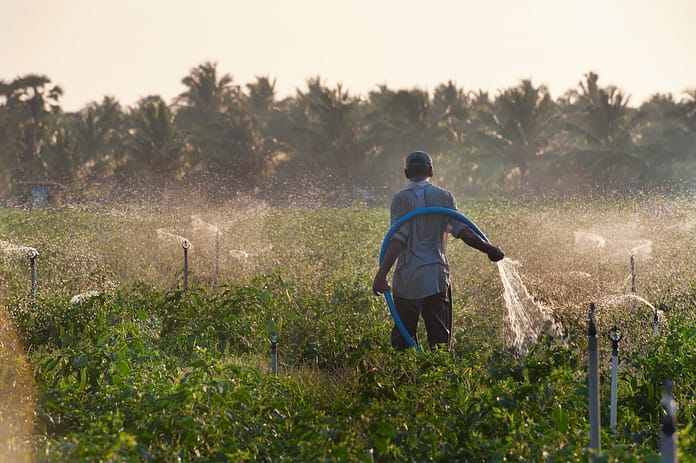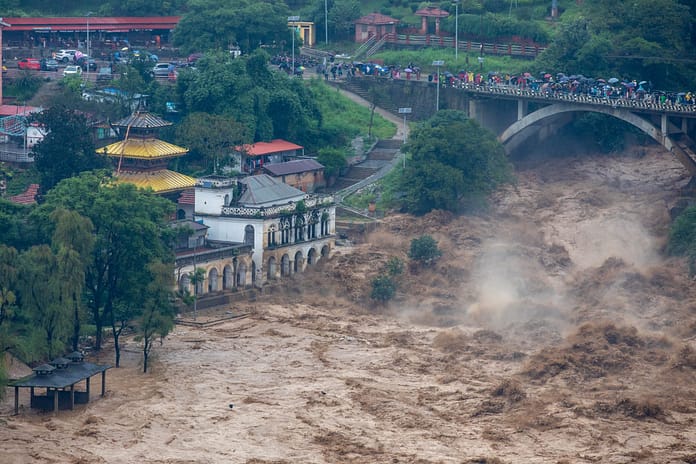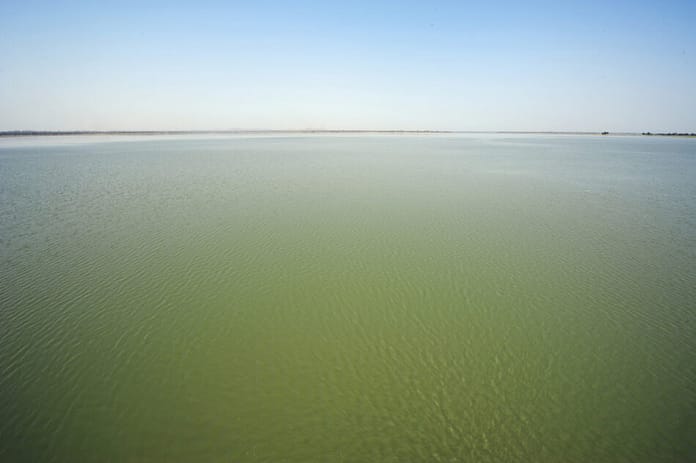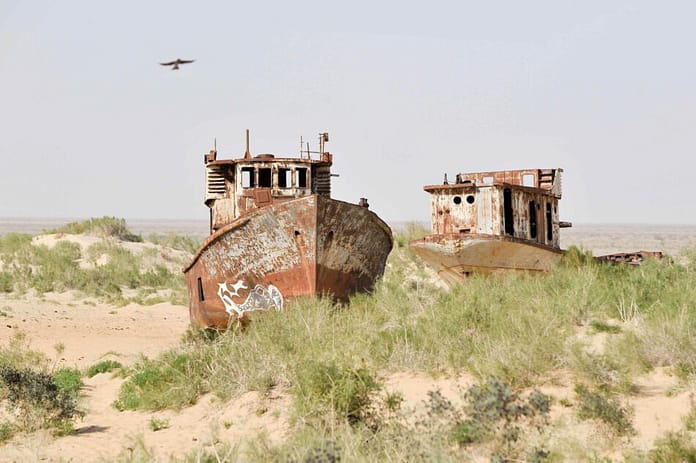In Ethiopia’s Somali Region, near the convergence of the Dawa and Genale rivers and a few kilometers from the tri-border with Somalia and Kenya, water rules with a paradoxical hand: scarce for months and treacherously abundant in others. The Dolo Ado and Bokolmayo districts have had an uneasy rhythm with this cycle for the past decade, but in April 2023, that turned into ruin, devastation and suffering.
Swollen by inflows from the distant highlands, the Genale River burst its banks and swept across farms and homes. The waters surged more than two meters high in some areas, stretching a few kilometers deep into Dolo Ado town that was once considered safe.
70-year-old Gududaw Id Hassan, a lifelong resident of Dolo Ado, recalls fleeing with many others to a nearby school where they sought refuge. He says: “20 years ago, floods stayed in the fields. But this time, it came for us.”
The Dolo Ado Secondary School became an emergency shelter, and over 5,000 households occupied the grounds in a span of two days. Classrooms overflowed with desperate mothers, children and the elderly, as many others were provided with plastic sheets to use as makeshift shelter. The limited sanitation systems were overwhelmed, leading to their collapse. Diarrhea became rampant, especially among children.
“The toilets were insufficient. The whole school was occupied,” Gududaw continues. “It was hell.”
Muna Mohamed Hassan, another Dolo Ado resident, recollects her family’s experience of being displaced for three months. “We were given plastic sheets and jerricans; it was stressful,” she says. “The mud and the smell… it made life miserable.”
The crisis unfolded in a matter of days. Latrines crumbled and shallow wells were contaminated. Some crocodiles washed in from the river, prowled through flooded farms and mauled donkeys.


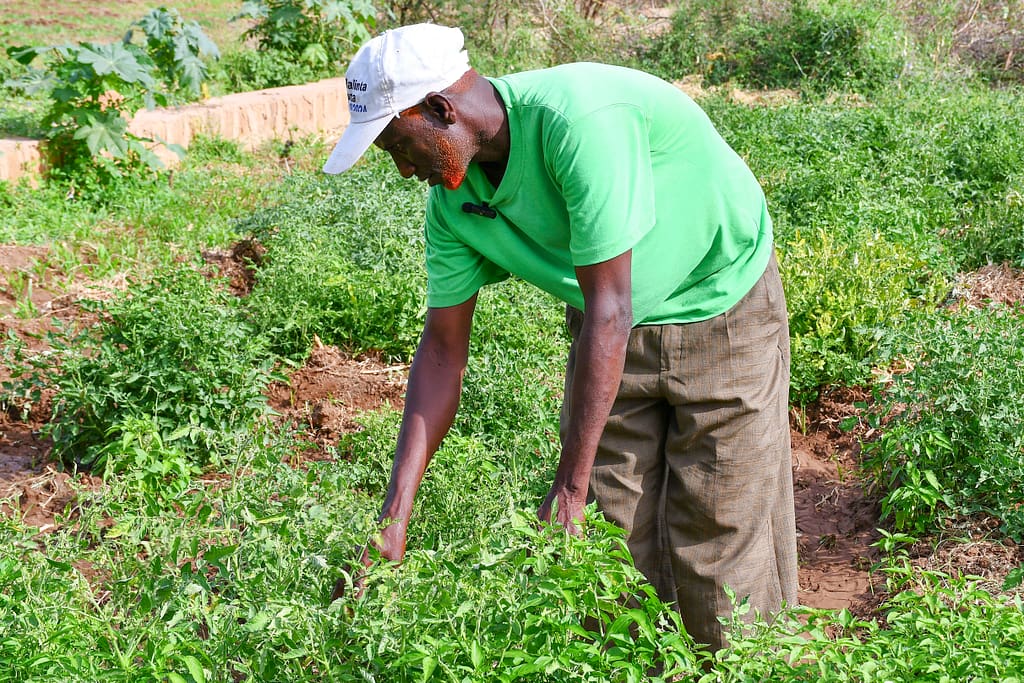
A community in crisis and transition
Dolo Ado is not a small, isolated village — it is a town that is growing and has a population surpassing 50,000. It is also expanding because of an influx of internally displaced people and refugees from across the border.
Farmer Abdulhaziz Ali has lived along the Genale River for 25 years. In 2023, he incurred heavy losses. “The flood washed away my water pipes,” he states. “I had invested 1.4 million Ethiopian Birr [$10,130 as of July 23, 2025] in my farm. I was expecting a good profit from onions, maize, bananas, but all were gone in a matter of days.”
For now, all he cares about are water pipes. “I need pipes to irrigate my banana field. Without that, it’s all a waste again,” he remarks.
At the Dolo Ado Secondary School, Director Adan Hassan Sambul is to date still grappling with the aftermath. “Our school lost nearly a whole term after the community sought shelter here for two months. Water pipes were uprooted, windows broken and fans in the classrooms destroyed,” he says. “The poles from the wire-mesh fence were used for fuelwood. It took the school’s management a whole month to try and get the classrooms and facilities into some shape. Two years down, we still need lots of materials for replacement.”
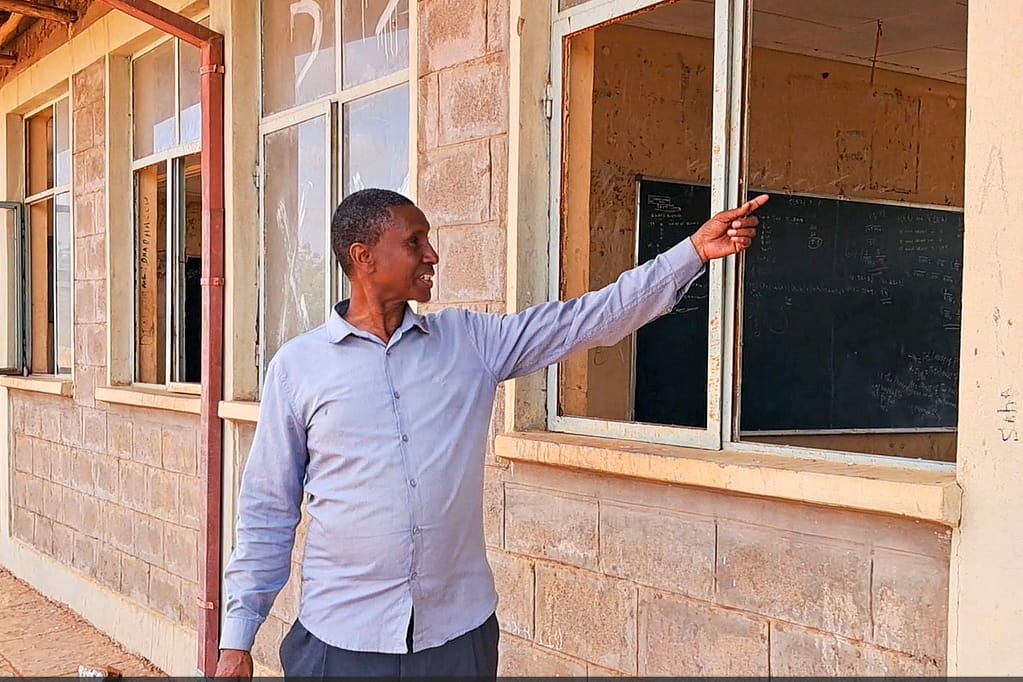

Addressing crisis through proactive response
A new approach to change these tides is taking root — one that is based on forecasting, preparation and partnership, and grounded in scientific research.
Led by the International Water Management Institute (IWMI), in partnership with the World Food Programme (WFP), Somali Regional State authorities, humanitarian agencies and local communities, a science-based flood resilience initiative aims to transform Dolo Ado and Bokolmayo into proof-of-concept sites for applying science and innovation to build climate resilience in East Africa’s drylands.
Central to the effort is the development of a “digital twin” —a real-time virtual model of the river basin. The digital twin will offer early warnings based on forecasts with tools for testing scenarios of flood preparedness interventions.
“We are not just trying to stop floods,” says IWMI senior researcher Alemseged Tamiru. “We’re building the tools to work with them — to support farming, recharge groundwater and protect lives.”
In Dolo Ado, the digital twin is being built from the ground up. Bringing science to difficult places, IWMI’s field team visited Dolo Ado to collect the core data needed to build the digital twin, integrating satellite imagery, drone mapping, river surveys, and insights from a 2024 participatory mapping session where residents traced the extent of the 2023 floods. This fieldwork, part of IWMI’s work within the CGIAR Food Frontiers and Security Program, gathered the core data for flood simulation, testing early response options and visualizing future scenarios.
IWMI’s consultant drone pilot and a graduate of the UNICEF-backed African Drone and Data Academy (ADDA), 21-year-old Ousman Belay spent over 50 hours shooting in the field. “It was empowering to apply my skills in the field. We collected 450GB of drone data and mapped 16.4 square kilometers with support from DroneDeploy, demonstrating that young people can be at the forefront of applied research, even in some of the most challenging environments.” This work was made possible through IWMI’s selection for DroneDeploy.org’s non-profit program which provides advanced drone software for remote sensing and mapping to eligible organizations.
Michael Scheibenreif, UNICEF Regional Manager of ADDA, notes: “It is fantastic to see that ADDA provided the necessary 21st century skills to support this endeavor. This is exactly what the program was designed to achieve.”
WFP’s Abdikadir Mohamed Farar concurs: “Floods have two phases; the immediate disaster and the long tail of disruption. If we plan and respond early, we can save both lives and livelihoods.”
In addition to the digital twin, interventions include nature-based solutions that will help build resilience and enable sustainable water and land management in the long term.
The challenge of displacement
Yet even the best planning can’t prevent every displacement. Dolo Ado District vice chair, Abdikadir Issak Mohamed, describes the tension between early warnings and time limitations. “In 2023, the water reached the town overnight,” he says. “We couldn’t warn or evacuate everyone in time.”
He points to engineering works in Kenya and Somalia that divert water toward Ethiopia. “We are caught in between. We need proper engineering here — dykes, gabions, flood barriers — to protect our lives and livelihoods,” emphasizes Abdikadir.
Farming areas up to 150 kilometers away from Dolo Ado town were affected last season. “That’s a huge blow to many community members,” he adds.
Municipal leader Cumar Diyaad Maxamuud says the option to relocate the communities is usually on the table — but essential services must be available. “We can’t just move people to dry and higher land without water or markets. They won’t stay.”
Muna agrees. “We could consider moving if we had water and market access. But our lives are in this town.”


A model for the future?
At almost 1,000 kilometers away from the regional capital Jijiga and with a poor road network, accessing Dolo Ado and Bokolmayo districts is a major challenge. The road infrastructure crumbled further with the last flooding as bridges and sections of the roads were washed away. “Our trucks that were ferrying food and emergency supplies got stuck for days in one of the seasonal rivers that flooded,” explains Farar.
As a solution, the Somali Regional Government, together with WFP, are working to fix some of the key road sections that were rendered impassable.
Still, existing resources are thin.
“The communities here face chronic poverty, weak health services, and seasonal diseases like diarrhea and measles,” Farar says. “But WFP is working with UNHCR, the Regional Government and communities to build up flood awareness to reduce risks.”
The flood preparedness, response and resilience strategy for the two districts is multi-layered: a digital tool, early warning, infrastructure and local partnerships. It is a step in the right direction.
“Our partnership with WFP brings science into alignment with Ethiopia’s national early warning and disaster risk systems, while supporting the resilience work on the ground,” says Abdulkarim Seid, IWMI Representative for Ethiopia and East Africa. “In places like Dolo Ado and Bokolmayo, it’s not just adaptation but also preparedness and transformation that is community-led, science-driven and born of necessity. It’s enables joint planning and long-term investment for communities facing compounding risks in fragile ecosystems.”
Back in Dolo Ado, the brown waters of the Genale River gently flow. The flood waters from the highlands will definitely return. But hopefully, in the near future, the communities and government authorities with support from IWMI and WFP will be ready — not to run, but to stand their ground.




